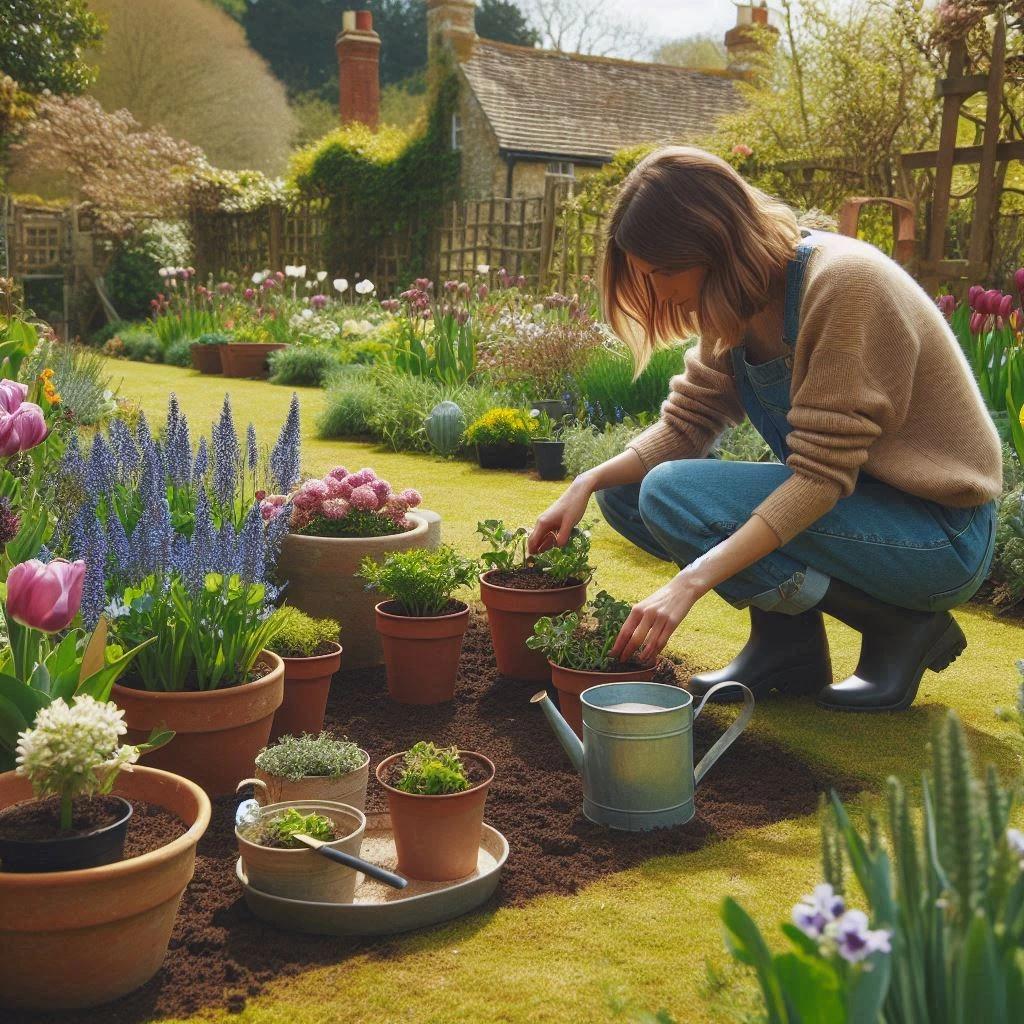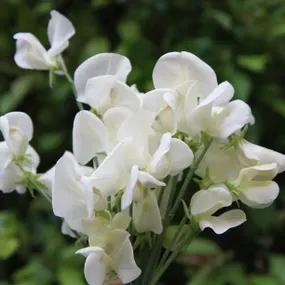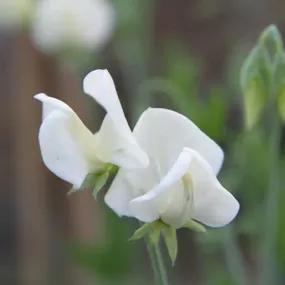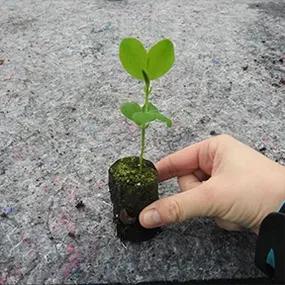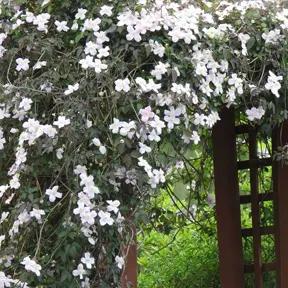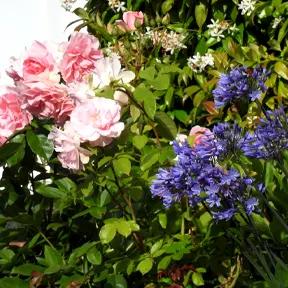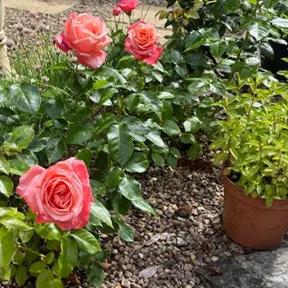'Mrs Collier' Sweet Pea Seedlings
- Colour: creamy white
- Stem: short
- Height: up to 2m
- Type: Grandiflora hybrid
- Scent: one of the best and most powerful
- Flowering: June to August
- Planting Months: March-June
Recommended extras
Description
Mrs Collier Sweet Pea
Mrs Collier is one of the most celebrated antique, heritage or heirloom sweet peas because of its outstanding and seductive scent and the masses of primrose yellow buds that open into cream-coloured perfectly proportioned flowers. Being an old-fashioned grandiflora, its blooms are relatively small but have that classic sweet pea shape with no extraneous frills - rather like a well-cut suit.
Browse our sweet pea range.
Our Sweet Peas are delivered in purpose-designed, recycled cardboard packaging, and are ready to be planted out when you get them.
We generally send them out between March and May, but we will email you with the likely delivery timescale once you have placed your order.
Features
- Colour: creamy white
- Stem: short
- Height: up to 2m
- Type: Grandiflora hybrid
- Scent: one of the best and most powerful
- Flowering: June to August
- Planting Months: March-June
In Your Garden Design
If you were to grow Mrs Collier on an obelisk in your garden, you would be creating a wondrous waterfall of creamy flowers through the summer. It is well known for producing absolutely masses of flowers meaning that cutting a few for the house would not spoil the display. Needless to say, its creamy colouring blends well with most other sweet peas in our collection and is a definite must for anyone planning a summer wedding on a budget. Its scent really is one of the most lovely and strongest of all sweet peas, and so she often appears in lists of the top 10 Best Scented Sweet Peas.
Planting Instructions
Mrs Collier Sweet Peas do best in well worked, moisture retentive soil. Adding organic matter really makes a difference and is best done the autumn before. But on the day is very much better than not at all. Your plants will do best in open ground, but you can get good results planting Sweet Peas in window boxes and pots of sufficient size - allow at least 3 litres per plant and remember that these are quite deep-rooted plants. In containers, the ideal planting mix is 50% compost, 40% topsoil and 10% well-rotted manure. Ordinary potting compost is OK, but you will get fewer flowers.
A range of supports can be used from twiggy branches to willow wigwams to posts with netting stretched between. Whatever you use, do the construction work before planting. Think about the position - Sweet Peas can cope with a little shade but flower better in full sun.
Space plants about 30 cm apart and about 5 cm from their supports. The hole should be deep enough to plant the full length of the rootball and allow enough so the soil finishes level with the lowest pair of leaves. Check to make sure they are climbing well every week or so, as they grow quickly. Tie into their supports if not.
Sweet Peas biggest need is for water - they are incredibly thirsty plants. So water well after planting and make sure they never completely dry out. They are greedy too so you will lengthen their flowering period if you give them a high potash and phosphate fertiliser every 7-10 days once buds begin to form. Home-made comfrey liquid is perfect or Tomorite will do - especially if you are on a sandy soil.
Cut the flowers as they develop pick them, otherwise they run to seed and stop flowering.
Did You Know?
Mrs Collier was introduced way back in 1907 by Dobbie and Co. as one of the Henry Eckford varieties that were to prove examples of such good breeding until many were supplanted by the larger, longer stemmed Spencer sweet peas. In spite of this her native charm, outstanding scent and perfect flowers mean that she is grown as much as ever.
It's Summer Planting Season 2025

Pot Grown & Plug Plants Delivered

Direct from the Nursery Value

No more broken plants in the post!
